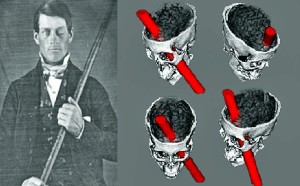Brain Injury Month
March is Brain Injury month, and I wanted to devote an article to this topic.
Brain injury is a broad topic that includes everything from concussions to gunshot wounds. For this article I will discuss the topic of traumatic brain injuries (TBI). Even though TBIs represent a subset of brain injuries, the causes are diverse, ranging from falls to anoxic brain damage (lack of oxygen to the brain resulting in brain cell death). In 2010 the CDC released a study that looked at data from 2002 – 2006.[1] In the study, among other findings, they concluded that the rate of death among all Emergency Department (ED) visits for TBI was a shocking 3.0%. Meaning that of the 1.7 million visits to the ED per year, 52,000 resulted in deaths from TBI. This number however, while unbelievable, does not portray those of us who do not die yet are left with the sequelae of brain cell death. In fact, because of these unwanted effects, TBIs have been called “the silent epidemic”.[2]
Let me first define TBI: TBI occurs as a result of any external force that causes any trauma to the brain. The most popular form of TBI is from concussion (the one you hear about on the news or Sportscenter), which occurs when someone strikes their head causing a bruising of the brain. The results vary widely, from a brief headache to death. However, for many of us TBI does not occur on a field. For me, it took place in an Operating Room. The CDC estimates that over 50% of all TBIs are the result of a fall.[3]
While the range of symptoms that TBI can cause is vast, the effects it can have on our lives is even more varied including little to no changes to our lives to permanent disability. The National Institute of Neurological Disorders divide TBIs and their consequences into mild, moderate, or severe “depending on the extent of damage to the brain.”[4]
To us, these are merely numbers and definitions that serve to help us understand this entity, however the real ‘meat’ of this topic is rooted in recovery. Yes, we now know that TBIs cause over 50,000 deaths each year and that its effects are far-reaching, but those are all events that have already occurred and are beyond our control; it is more important to know what we can do to help us recover. The human body and the brain are amazingly resilient; thus part of the recovery process simply requires the ‘tincture of time’. This is not a short process, as my physician told me in the hospital, “Chris, remember this isn’t a sprint, it’s a marathon.” I often remember this when I find myself wishing my recovery process were quicker.
When I was discharged from the hospital last year, I was given a prescription for Speech, Occupational, and Physical therapy. These are all modalities of rehabilitation that focus on different areas of recovery: Speech Therapy is self-explanatory, with the goal of improving speech deficits. Occupational Therapy aims at helping with daily and work skills. Physical Therapy attempts to aid patients through improvements to mobility and function. Throughout this process I have been praised for my hard work. While these comments are extremely kind, I assumed that everyone works hard and ‘gives 100%’ when rehabilitating in therapy. However, I feel that a satisfying recovery requires two virtues: patience and determination. Without patience, the thought of a long arduous journey to recovery would be daunting. At times you will feel like Sisyphus pushing that boulder up the hill only to see it roll back down.[5] Without patience you might not see that you are making progress, and that your hard work, your suffering does have a purpose. This patience though will be useless without determination as well. It is determination that pushes you to complete that extra exercise or begin that extra vocal activity. Otherwise, while you may partake in those endeavors, without determination you’d simply be going through the motions and lack the true effort.
In medical  school we are introduced to the incredible story of Phineas Gage. On September 13 of 1848, Gage, working as a foreman for a railroad, underwent a horrific accident that resulted in an iron rod piercing through his left eye socket into his brain and out through his skull. His story is an incredible one because not only did Gage live through this incident, but he became a productive member of society afterwards.[6] In considering brain injuries and their effects, we should think about the story of Gage. He reminds us of the power of the mind and its ability to overcome the greatest challenges.
school we are introduced to the incredible story of Phineas Gage. On September 13 of 1848, Gage, working as a foreman for a railroad, underwent a horrific accident that resulted in an iron rod piercing through his left eye socket into his brain and out through his skull. His story is an incredible one because not only did Gage live through this incident, but he became a productive member of society afterwards.[6] In considering brain injuries and their effects, we should think about the story of Gage. He reminds us of the power of the mind and its ability to overcome the greatest challenges.
[1] http://www.cdc.gov/traumaticbraininjury/pdf/blue_book.pdf
[2] Id.
[3] Id.
[4] http://www.ninds.nih.gov/disorders/tbi/tbi_htr.pdf
[5] http://www.mythweb.com/encyc/entries/sisyphus.html
[6] http://www.smithsonianmag.com/history/phineas-gage-neurosciences-most-famous-patient-11390067/?no-ist
